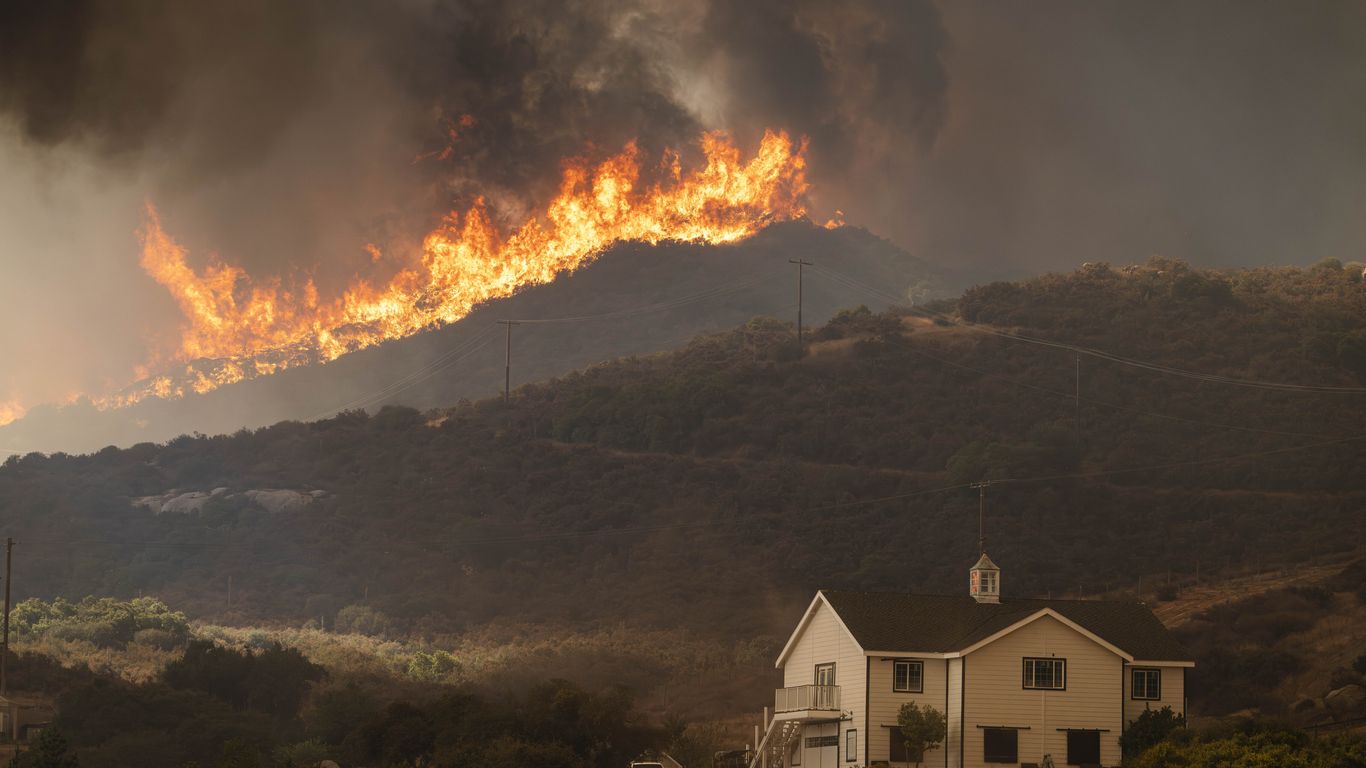The Impact Of Dangerous Climate Whiplash On Cities: A Comprehensive Report

Table of Contents
Increased Frequency and Intensity of Extreme Weather Events
Climate change is the primary driver of climate whiplash. The warming planet fuels more unpredictable and intense weather patterns, leading to a dramatic increase in the frequency and severity of extreme weather events in urban areas globally. The Intergovernmental Panel on Climate Change (IPCC) has documented a clear upward trend, with many cities experiencing a significant rise in the number and intensity of heatwaves, floods, and droughts in recent decades.
- Increased heatwaves and their impact on urban heat islands: Urban areas, with their concrete jungles and lack of green spaces, are particularly vulnerable to heatwaves, experiencing the "urban heat island effect." This leads to significantly higher temperatures in cities compared to surrounding rural areas, exacerbating the health risks associated with extreme heat.
- More frequent and severe flooding events due to intense rainfall: Climate change is intensifying the hydrological cycle, leading to more intense rainfall events and consequently, more frequent and severe flooding in urban areas. Poor drainage systems and inadequate flood defenses further compound the problem.
- Prolonged droughts followed by sudden flash floods: Climate whiplash manifests in the dramatic shift from prolonged periods of drought, stressing water resources, to sudden, intense rainfall leading to flash floods, causing widespread damage and disruption.
- Stronger storms and increased wind damage: Increased atmospheric energy due to climate change results in more powerful storms, bringing higher wind speeds and increased damage to urban infrastructure.
Damage to Urban Infrastructure and Economic Costs
The economic burden of climate whiplash on cities is staggering. The repair of damaged infrastructure – roads, bridges, power grids, water systems – after extreme weather events represents a significant financial strain on municipal budgets. Furthermore, the disruption to businesses and supply chains caused by these events leads to substantial economic losses.
- Cost of repairing damaged roads and bridges after floods: Flooding can cause extensive damage to transportation infrastructure, leading to costly repairs and significant delays in restoring vital transport links.
- Economic losses due to business closures and supply chain disruptions: Extreme weather events can force businesses to close temporarily or permanently, impacting employment and economic output. Disruptions to supply chains can ripple through the economy, causing further losses.
- Increased insurance premiums and potential for bankruptcies: The increased risk of damage from extreme weather events drives up insurance premiums, placing a further burden on businesses and individuals. In some cases, repeated extreme weather events can lead to bankruptcies.
- Long-term impacts on property values: Properties located in areas prone to flooding or other extreme weather events may experience a decline in value, impacting the overall economic health of the city.
Public Health Risks Associated with Climate Whiplash
Climate whiplash poses significant public health risks. The rapid fluctuations in temperature, water contamination, and increased risk of infectious diseases all contribute to a deterioration in public health outcomes. The repeated exposure to traumatic weather events also significantly impacts mental health.
- Heatstroke and heat-related illnesses during heatwaves: Extreme heat can lead to heatstroke, heat exhaustion, and other heat-related illnesses, particularly affecting vulnerable populations like the elderly and those with pre-existing health conditions.
- Waterborne diseases due to contaminated water sources after flooding: Flooding can contaminate water sources, leading to outbreaks of waterborne diseases like cholera and typhoid.
- Respiratory problems caused by air pollution exacerbated by wildfires: Wildfires, often intensified by drought conditions, produce significant air pollution, leading to respiratory problems.
- Increased stress, anxiety, and PTSD among affected populations: Repeated exposure to traumatic weather events can have a significant impact on mental health, leading to increased rates of stress, anxiety, and post-traumatic stress disorder (PTSD).
Strategies for Building Urban Resilience to Climate Whiplash
Building urban resilience to climate whiplash requires a multi-pronged approach incorporating mitigation and adaptation strategies. Sustainable urban planning and green infrastructure play a crucial role in mitigating the impacts of extreme weather events.
- Investing in resilient infrastructure (flood defenses, heat-resistant materials): Cities need to invest in infrastructure designed to withstand extreme weather events, including improved flood defenses and the use of heat-resistant materials in buildings.
- Implementing early warning systems for extreme weather events: Early warning systems are crucial for allowing cities and their populations to prepare for and mitigate the impacts of extreme weather events.
- Developing green spaces to mitigate urban heat islands: Green spaces, such as parks and green roofs, can help to mitigate the urban heat island effect, reducing the severity of heatwaves.
- Improving water management systems to cope with both drought and flood: Cities need to invest in water management systems that can cope with both prolonged droughts and sudden, intense rainfall.
- Promoting community preparedness and disaster response plans: Community preparedness and well-rehearsed disaster response plans are essential for minimizing the impact of extreme weather events.
Mitigating the Impact of Dangerous Climate Whiplash on Our Cities
Climate whiplash presents a serious and multifaceted threat to our cities, demanding urgent and proactive action. The economic costs, damage to infrastructure, and public health risks associated with climate whiplash are substantial and will only worsen without significant intervention. Building urban resilience through sustainable urban planning, investment in resilient infrastructure, and effective community preparedness is not merely an option; it's a necessity. We must learn more about climate whiplash, advocate for policies promoting sustainable urban development and climate change adaptation, and actively engage in local initiatives to build community resilience against climate whiplash and its devastating effects. Further research into specific aspects of climate whiplash and its impact on individual cities is crucial for developing targeted and effective solutions. Let's work together to create cities that are truly resilient to the impacts of climate whiplash.

Featured Posts
-
 Victorious Cycling Team Targets Tour Of The Alps Success
May 31, 2025
Victorious Cycling Team Targets Tour Of The Alps Success
May 31, 2025 -
 The Housing Market Slump Record Low Home Sales
May 31, 2025
The Housing Market Slump Record Low Home Sales
May 31, 2025 -
 Designing Your Good Life A Practical Guide
May 31, 2025
Designing Your Good Life A Practical Guide
May 31, 2025 -
 Unexpected Banksy What To Do Now
May 31, 2025
Unexpected Banksy What To Do Now
May 31, 2025 -
 Tsitsipas Medvedev Victorious At Indian Wells Berrettini Exits
May 31, 2025
Tsitsipas Medvedev Victorious At Indian Wells Berrettini Exits
May 31, 2025
